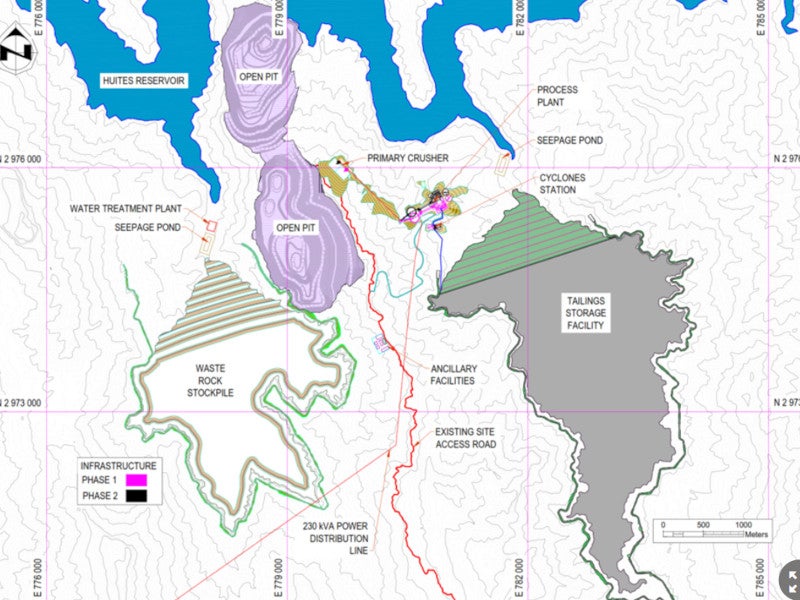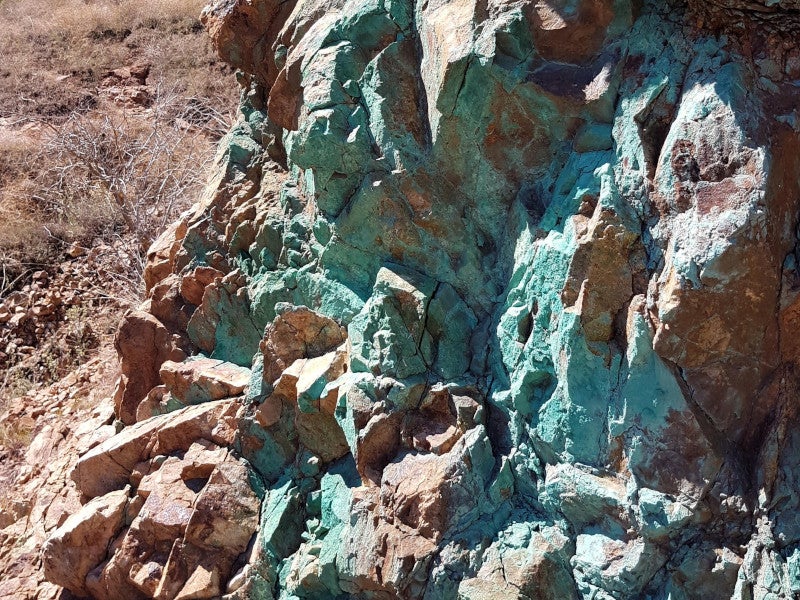The Santo Tomas copper project in the northern Sinaloa state of Mexico is being developed as an open-pit mine. The project is being developed by Canadian mineral exploration company, Oroco Resource.
The preliminary economic assessment (PEA) for the project was completed in October 2023. The project has an estimated life-of-mine of 23 years, with an initial capital investment estimated at $1.34bn.
It is expected to produce an average of 292 million pounds per year of copper over the first five years of full production.
The second phase of exploration commenced in the fourth quarter of 2023, centred on the expansion of surface oxide copper mapping in the South Zone.
Location
The Santo Tomas project is located in the Choix municipality of Sinaloa state, Mexico. The property’s concession encompasses 1,172.9ha, which covers the initial exploration area and the Santo Tomás North and South porphyry copper mineralisation.
Geology and mineralisation
The geology of the Santo Tomas project features a porphyry copper deposit with fractures and disseminated copper and molybdenum sulphides, alongside notable gold and silver by-products. The deposit is part of the Laramide Belt, a north-west-south-east trending copper-rich region extending from the south-western US into southern Mexico.
The mineralisation at Santo Tomas is closely associated with intrusive rocks formed during the Laramide orogeny. The property is aligned with a 1,500km-long belt, rich in porphyry copper deposits, that runs from the south-western US to Guerrero State in Mexico.
Reserves
The North Zone is estimated to contain an indicated resource of 561 million tonnes (t), grading 0.33% copper, 0.008% molybdenum, 0.027g/t gold, and 2.1g/t silver as of October 2023.
The combined inferred resource for the North and South Zones is 549.1 million tonnes, grading 0.308% copper, 0.007% molybdenum, 0.021g/t gold, and 2.0g/t silver as of October 2023.
Mining method
The operations will be carried out using conventional open-pit mining methods using trucks and shovels on 10m bench intervals and a strip ratio of 1.16.
Operations are planned to proceed round-the-clock, every day of the year. The processing plant’s throughput is projected at 60 kilotonnes per day in the first year, doubling to 120 kilotonnes per day thereafter.
Mining is proposed to be conducted in phases with Phase one as the starter pit on the North zone, to extract the highest-grade material. The second phase will be a pushback towards the bottom of the pit, also focussing on higher-grade materials.
Phase three will mainly involve prestripping of the South mining area. Phase four will extend mining operations in the South zone to the pit bottom, forming the ultimate pit shell.
The mining fleet will include hydraulic shovels, a front-end loader, and haul trucks. The haulage fleet will consist of up to 61 trucks in operation.
Ore processing
The run-of-mine ore will be crushed using a primary gyratory crusher followed by secondary cone crushers. The ore will undergo further crushing in a tertiary high-pressure grinding rolls circuit.
Two slurry pumps will pump the crushed slurry into a primary cyclone cluster, one for each line. The cyclone underflow will directly feed the ball mill while the overflow will be directed to the rougher flotation circuit.
The rougher concentrate will be reground in a stirred mill in open circuit with a hydrocyclone cluster.
The slurry from the regrind mill will be combined with the cyclone overflow and pumped into the cleaner flotation circuit and undergo a three-stage cleaning. Copper and molybdenum concentrates will be processed further in separate flotation cells to increase the mineral grade.
The copper and molybdenum concentrates will be separately thickened to 60% solids density and filter-pressed using a vertical pressure filter to obtain a final concentrate with 6% and 15% moisture, respectively.
Site infrastructure
The site is accessible via a 169km paved highway from the Port of Topolobampo on the Pacific Ocean, passing through Los Mochis and extending to Choix in the north. A new road will be constructed, branching from an existing route through Cajon de Cancio and Rancho La Soledad, to provide direct access to the Santo Tomas site.
Power for the project is supplied by a nearby 230kVA high-voltage power transmission line connected to the Huites hydroelectric plant. A new power supply line is proposed to be installed and routed to a new substation at the project site.
The water requirement is proposed to be met by tapping groundwater from a well-field within a 25km radius of the plant. It will involve 12 wells for each phase of the project, supported by three pumping stations.
Contractors involved
Ausenco, a global engineering and operations service provider prepared the PEA for the Santo Tomas copper project.
SRK Consulting, a leading international mining consultancy, was responsible for developing the mineral resource estimate while Mining Plus, another mining consultancy, provided the mine plan.






